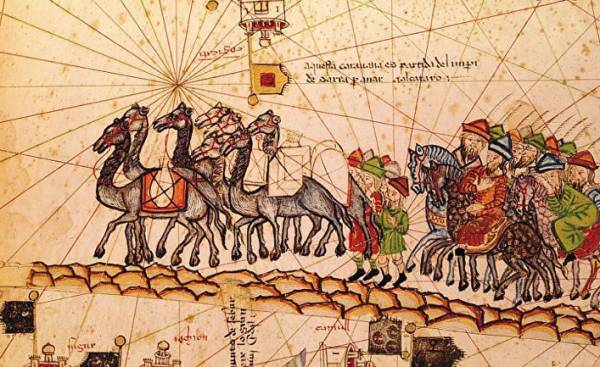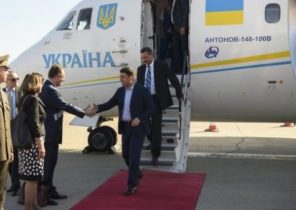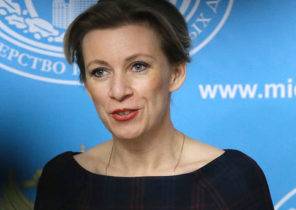
While China is “encircling” India with its project “One belt, one road” (it launched in 2013, the “rebranding” of the old project that aims to put China at the head of the new economic order panevezhisskogo), India had its own transcontinental plan. It’s called “Transport corridor North-South” (North-South Transport Corridor), and its aim is the improvement of transport links between Iran, Russia, Caucasus and Central Asia.
In fact, this project is a multimodal transport corridor, with a length of 7,200 km. This trade route from India to Russia, linking the Indian ocean, the Persian Gulf and the Caspian sea. The goods are transported from the port of Jawaharlal Nehru port and Kandla (Kandla) in the Western part of India to the port of Bandar Abbas in Iran and then by road and rail via Baku to Moscow, St. Petersburg and beyond. In the future, the second route can be traced along the Western coast of the Caspian sea, and on the new railway linking Kazakhstan, Turkmenistan and Iran. In the end, he will be integrated into the transnational corridor.
Built with international participation corridor, according to the developers of this project will enable to reduce prices and the time required for the transport of goods between such cities as Mumbai, Bandar Abbas, Tehran, Baku, Aktau, Moscow and St. Petersburg. It is anticipated that this route will be the driver of trade in the region, which is quickly integrated and developed.
India clearly considers its trade with Russia is negligible given the size of the economies of both States. In 2015, the volume of India’s exports to Russia totaled just $ 1.6 billion. For India, partly due to the presence of logistical problems. Currently for transportation of goods from one country to another is required to make a long and difficult sea route through the Arabian sea, the Suez canal, the Mediterranean, North and Baltic sea, and only the passage along this route need to spend a minimum of 45 days. The project “the Transport corridor North-South” aims to correct this situation.
“This route can halve the journey from Mumbai to St. Petersburg, — said Jonathan Hillman (Jonathan Hillman), Director of “New relations of Asia” (Reconnecting Asia) Center for strategic international studies (Center for Strategic International Studies). — According to some estimates, the route from North to South is economically more promising than some of the emerging land routes East — West”.
It has been conducted three tests to examine the feasibility of the project. Two of them in 2014 showed that the new route will be 30% cheaper and 40% shorter than the currently existing solely sea route.
As with most projects, the “New silk road” development “of the Transport corridor North-South” began over 15 years ago. The idea originally appeared in 2000, and two years later, Russia, India and Iran signed a formal agreement in order to make this project a reality.
As XI Jinping continues his noisy campaign about the “Belt and road” on all space of Eurasia (the so-called territory, including Europe and Asia), advertising the connection between the regions and the benefits of owning a more developed transport communication with China, India plunged into a number of international projects. Under the policy of “Connecting Central Asia” (Connect Central Asia) India is trying to penetrate deeper into the infrastructure and economy of Eurasia. In addition to the “Transport corridor North – South,” she takes a very active part in the development of the Iranian port of Chabahar, whose turnover is expected to increase five times and bring it up to 12.5 million tons per year. In addition, new Delhi supports the construction of a road with a length of 218 kilometres, connecting the Central part of Afghanistan with the Iranian border, and multilateral project “Caladan” (Kaladan) in Myanmar, the TRANS-Asian railway from Dhaka to Istanbul (Trans-Asian Railway), highway India — Myanmar — Thailand and perhaps the expansion of the port of Trincomalee in Sri Lanka.
In addition to real infrastructure projects, India is also showing activity in the sphere of political relations. She recently joined the Shanghai cooperation organization and signed the Customs Convention on the carriage of goods. In this partnership, advocating for more effective international transportation of goods includes 71 countries. In addition, India is trying to promote his version of the agreement on creation of the road, the Bangladesh — Bhutan — India — Nepal, and discusses the possibility of concluding partnership agreements with the Eurasian economic Union and economic area, which includes Russia, Belarus, Kazakhstan, Kyrgyzstan and Armenia. As emphasized Bipul Chatterjee (Bipul Chatterjee) and Surender Singh (Surendar Singh) in his publication in the magazine the Diplomat, India’s efforts to improve transport links in Central Asia go far beyond simple geopolitics and questions more efficient transportation of goods. India already ranks fourth in the list of the largest consumers of electricity — the demand in this country increases every day — and the supply of such natural resources are a strong point in Central Asia.
“The transport corridor North-South” and related projects provide India an easier path in the center of Eurasia, which bypasses Pakistan. This is very attractive for new Delhi, especially when you consider that China is implementing their economic corridor “China — Pakistan”.
Much has been written about the fact that “Transport corridor North-South” will be a challenge for initiatives of China’s “One belt, one road”, but such a view actually exists ligi in the walls of the research centers, as well as in the comments section of various sites. In real life, these two initiatives complement and feed off each other. The intentions and goals of these projects are very difficult to separate from each other.
“Overall, I consider the Transport corridor North-South in addition to the Chinese project “One belt, one road”, — said Hillman. — It will contribute to a better integration of its members, particularly Iran and Azerbaijan, in the structure of the regional networks. Supported by the China routes are profitable to the economies of both these countries”.
For countries located in Central Eurasia — Iran, Kazakhstan, Turkmenistan and the Caucasus States — transport links are vital. These countries have joined together to fulfill this goal. After all, before they were inaccessible and were somewhere very far away, and now I want to be in the heart of the world. Currently they cooperate with all major geopolitical players in order to create a colossal system of extended trade routes from East to West and from North to South, which are of strategic importance, intersecting in these States.
Regardless of what “products” soft power Beijing stamp factory, the Chinese initiative of “One belt, one road” is not the same as the New silk road. The initiative “One belt, one road” is part of a larger project aimed to integrate between the economy of Eurasia. But this is the goal of such large-scale initiatives, proposed by Russia, Japan and India. These initiatives all with different names should be seen as an integral part of one of the multinational mega-project, known as the New silk road.
Wade Shepard is the author of the book “Chinese Ghost towns” (Ghost Cities of China)







